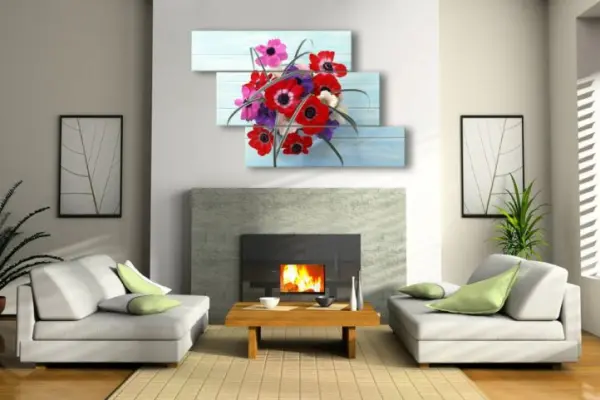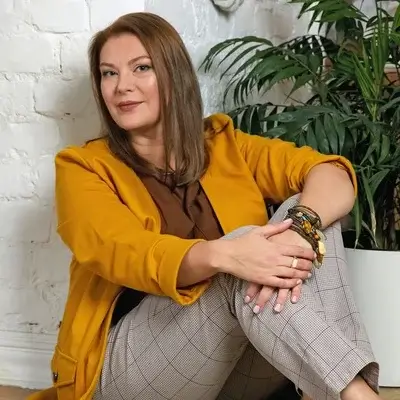In the world of modern interior design, creating canvas paintings has become an incredibly accessible and diverse process. Want to decorate your home with a unique photo artwork for your interior or a canvas reproduction of a famous masterpiece? Interior printing technologies and large-format printing open up limitless possibilities for personalizing your living space!
Did you know that thanks to modern methods of producing canvas paintings, production costs have decreased by as much as 70% compared to traditional artistic techniques? This is truly a revolution in the world of interior art, making quality interior decoration with paintings accessible to everyone.
"Interior canvas paintings have become not just decorative elements, but a way of self-expression and creating an emotional atmosphere at home. A properly selected wall composition can completely transform a space, adding individuality and character, while today it is accessible to almost everyone." — Interior Designer Alex Morgan
Technological Aspects and Creative Possibilities of Modern Printing
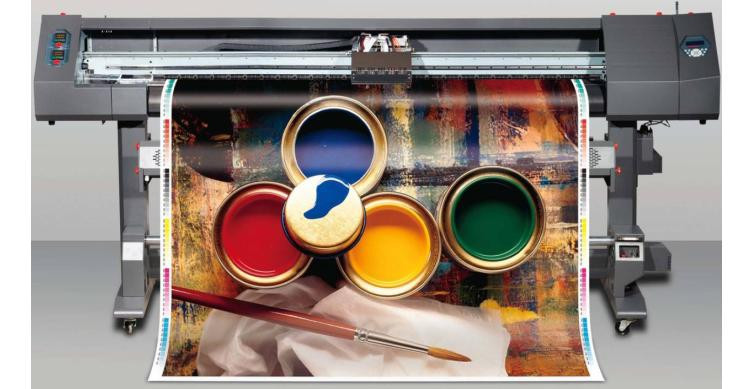 Modern technologies for transferring images to canvas have taken interior art to a completely new level. Today, many methods are available for creating paintings from photos, from high-precision digital printing to artistic image processing using artificial intelligence. In the process of applying images to canvas, environmentally friendly paints are used that are resistant to fading and ensure the durability of images for many years.
Modern technologies for transferring images to canvas have taken interior art to a completely new level. Today, many methods are available for creating paintings from photos, from high-precision digital printing to artistic image processing using artificial intelligence. In the process of applying images to canvas, environmentally friendly paints are used that are resistant to fading and ensure the durability of images for many years.
The process of creating custom interior artwork includes several stages: preparing the layout, color correction and retouching, printing on natural or synthetic canvas, stretching the canvas on a stretcher frame, and, if desired, framing. Each stage is controlled by professionals, guaranteeing impeccable quality of the final result — from clarity of color reproduction to perfect canvas stretching.
How to Choose the Optimal Image Resolution for Printing
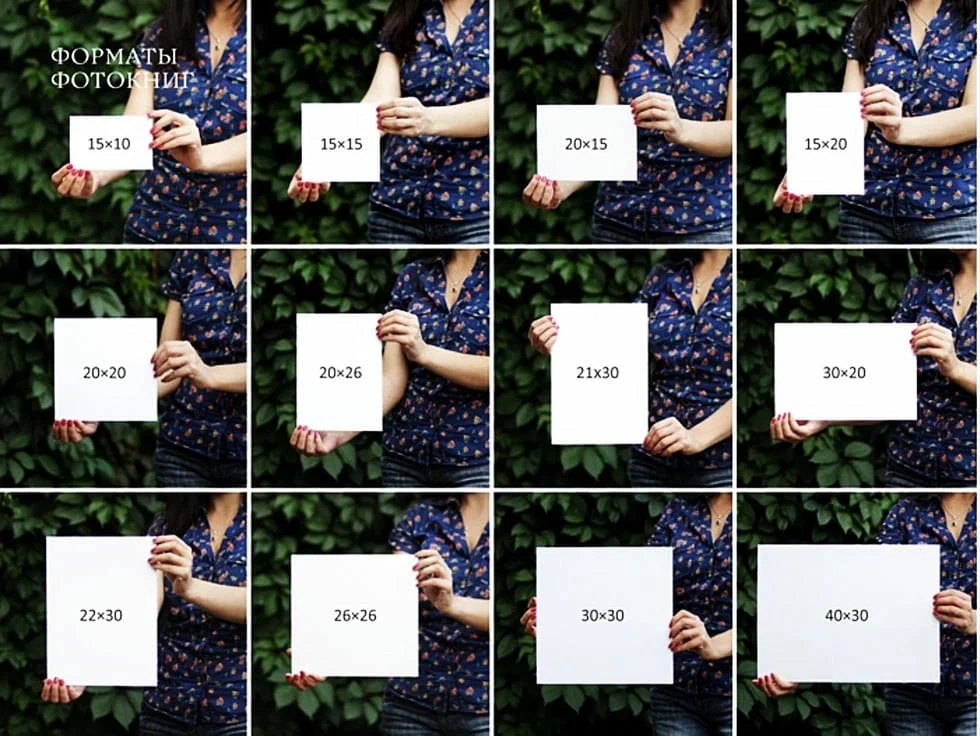 One of the most practical tips when ordering canvas photo printing with delivery is choosing the right resolution of the original image. The density and type of canvas also affect the quality of the final result. To achieve high quality, use the following parameters:
One of the most practical tips when ordering canvas photo printing with delivery is choosing the right resolution of the original image. The density and type of canvas also affect the quality of the final result. To achieve high quality, use the following parameters:
- For size 20×30 cm — minimum 1200×1800 pixels (150 dpi)
- For size 40×60 cm — minimum 2400×3600 pixels (150 dpi)
- For size 80×120 cm — minimum 4800×7200 pixels (150 dpi)
If you don't have an image of suitable size, modern scaling and retouching technologies using artificial intelligence allow you to increase the resolution of photos without losing quality, which was impossible just a few years ago. Many canvas printing services offer this as an additional option when placing an order.
Learn more about trends in the printing industry for 2025
Design Personalization and Canvas Stretching Methods
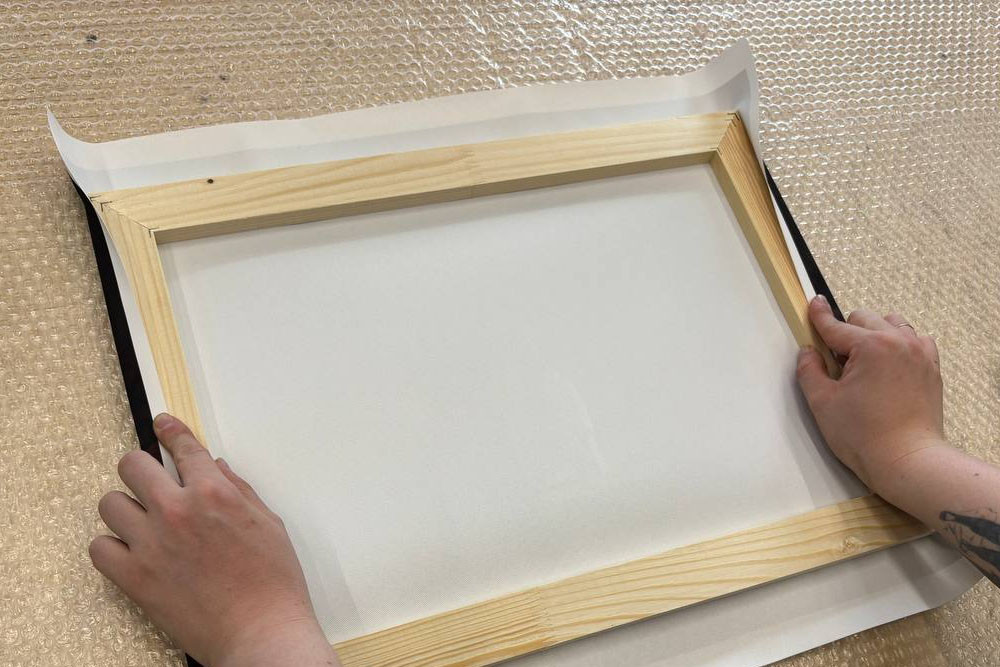 What makes custom interior paintings special in 2025? Certainly, the possibility of deep personalization! About 35% of all canvas orders for interiors are individual works created from photographs or unique customer designs. From portraits on canvas and family photo artworks for interiors to abstract compositions — modern technologies allow you to bring almost any idea to life.
What makes custom interior paintings special in 2025? Certainly, the possibility of deep personalization! About 35% of all canvas orders for interiors are individual works created from photographs or unique customer designs. From portraits on canvas and family photo artworks for interiors to abstract compositions — modern technologies allow you to bring almost any idea to life.
| Canvas Stretching Method | Features | Advantages | Ideal for | Approximate Price Premium |
|---|---|---|---|---|
| Standard Stretching | Image is fixed on the front side of the stretcher frame, edges remain empty | Economical solution, suitable for framing | Classic interiors requiring additional framing | Base price (no premium) |
| Gallery Stretching | Image is printed with extra margin and wraps around the edges of the stretcher frame | Creates a continuation effect for the painting, doesn't require a frame | Modern minimalist interiors, multi-part images | +10-15% |
| Premium Hand Stretching | Performed manually by experienced craftsmen with perfect tension | Higher quality, durability, no sagging over time | Collectible works, expensive canvas reproductions, large-format canvases | +25-30% |
| Floating Stretching | Canvas is mounted in a way that creates a "floating" effect on the wall | Modern impressive look, visual lightness | Minimalist interiors, art spaces, galleries | +20-25% |
The choice of canvas stretching method can radically change the impression of an interior painting, so it's important to consider the features of your space and the overall design concept when ordering. The table above presents not only the aesthetic features of each method but also the approximate premium to the base price of canvas printing, which will help you plan your budget.
Modular Paintings: A New Trend in Interior Decor
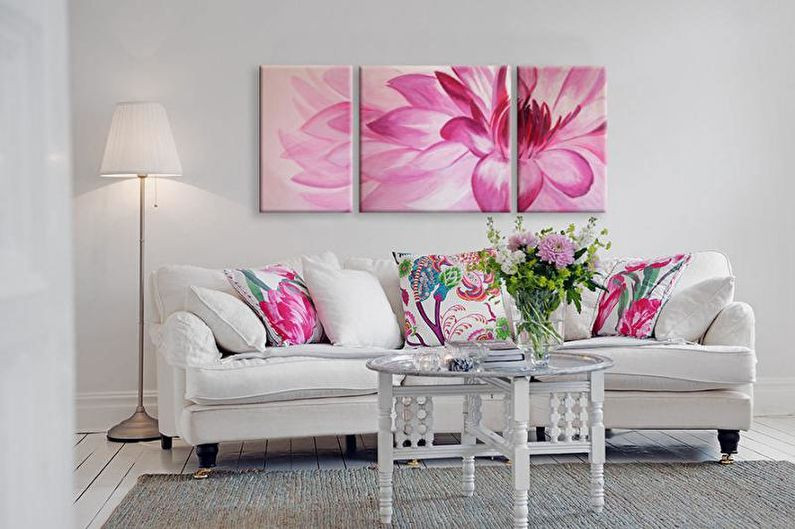 One of the main trends in recent years is segmented canvases divided into several parts. According to experts from Better Homes & Gardens, modular canvas paintings entered the top 10 wall decor trends in 2024-2025. Statistics show a 45% growth in sales of this format over the past year, especially in urban areas with a predominance of modern interior style.
One of the main trends in recent years is segmented canvases divided into several parts. According to experts from Better Homes & Gardens, modular canvas paintings entered the top 10 wall decor trends in 2024-2025. Statistics show a 45% growth in sales of this format over the past year, especially in urban areas with a predominance of modern interior style.
Explore wall art trends for 2024-2025
Compositions of multiple canvases allow you to create a dynamic visual solution and organically incorporate a large-format image even in a small space. Multi-part images look especially effective in spacious living rooms, loft spaces, and when decorating an office with paintings where you need to create a memorable accent.
Practical Advice on Placing Modular Paintings
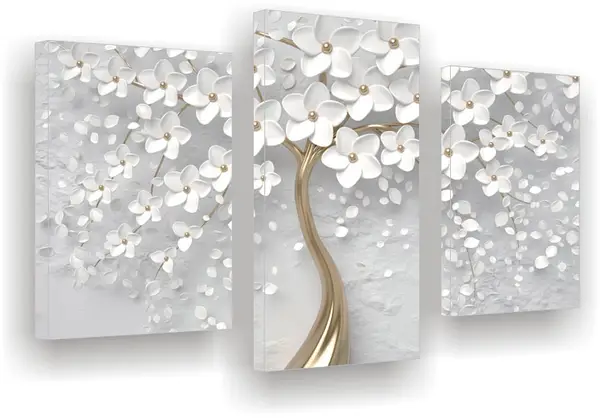 When placing compositions of several canvases, it's important to maintain the correct distance between elements:
When placing compositions of several canvases, it's important to maintain the correct distance between elements:
- The optimal distance between modules is 2-4 cm
- Use a construction level or laser level for alignment
- Before installing wall mounts, create a paper template and apply it to the wall for visualization
- The distance from the floor to the bottom of the painting should be 90-110 cm for optimal perception
"Modular canvas paintings are not just decorative elements, they're a way to manage the perception of space. A segmented image creates intrigue, makes the eye move from part to part, which visually enlarges the room and adds depth. When decorating an office with paintings, this approach allows you to strengthen corporate identity and create a memorable impression for visitors." — Architect and Designer Maria Chen
Artistic Styles and Their Application in Interior Paintings
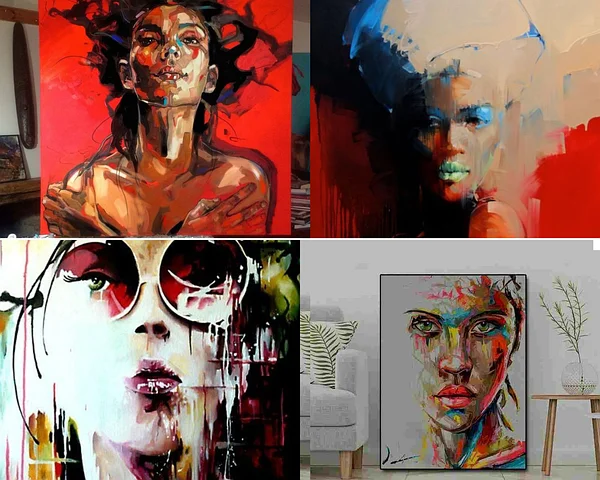 When choosing or creating canvas paintings for your interior, it's important to consider not only the color scheme and size but also the artistic style of the work. Each art direction creates its unique mood and atmosphere in the space:
When choosing or creating canvas paintings for your interior, it's important to consider not only the color scheme and size but also the artistic style of the work. Each art direction creates its unique mood and atmosphere in the space:
- Abstract — perfectly suited for modern minimalist interiors, creates dynamics, play of forms and color
- Landscape — brings a sense of spaciousness and natural harmony to the space, especially relevant for urban apartments
- Portrait — adds personal character and individuality, creates an emotional connection
- Pop Art — bright, contrasting works for bold modern interiors
- Impressionism — soft, atmospheric paintings for creating a cozy, romantic mood
Stylizing portraits in various artistic directions is one of the popular trends in creating personalized interior paintings. For example, your ordinary photograph can be transformed in the style of a classical Renaissance portrait or converted into a bright pop art composition inspired by Andy Warhol's works.
DIY Approach: Creating Interior Paintings with Your Own Hands
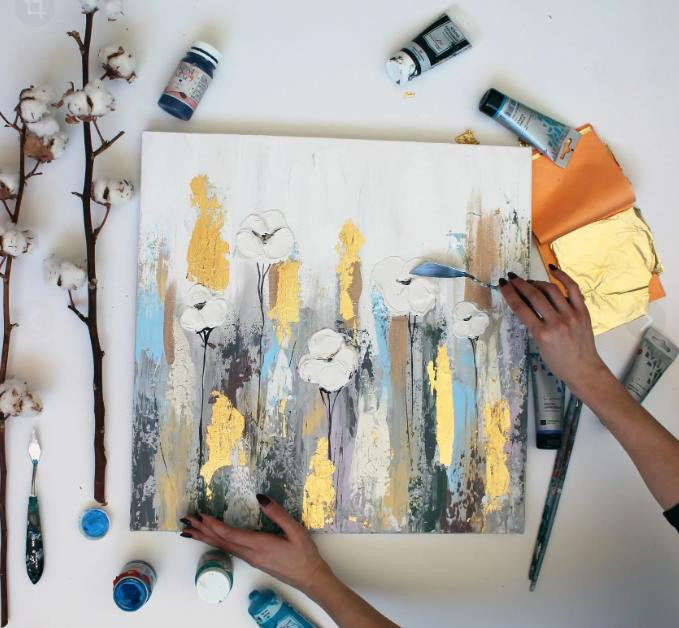 For creative individuals, there are many techniques for creating canvas paintings by hand. Fluid art technique (liquid acrylic) has become particularly popular, allowing even beginner artists to create impressive abstract compositions. This acrylic painting technique on canvas doesn't require special skills, only basic art materials for beginners and a bit of inspiration.
For creative individuals, there are many techniques for creating canvas paintings by hand. Fluid art technique (liquid acrylic) has become particularly popular, allowing even beginner artists to create impressive abstract compositions. This acrylic painting technique on canvas doesn't require special skills, only basic art materials for beginners and a bit of inspiration.
The liquid acrylic technique is based on the property of diluted paints to flow and mix, creating unique patterns and shapes. Unlike impasto on canvas, where thick brushstrokes are used and volumetric texture is created, fluid art gives more smooth, flowing effects. Another popular direction is working with epoxy resin for paintings, which creates a glossy surface and incredible depth of color.
Economic Starter Kit for Fluid Art
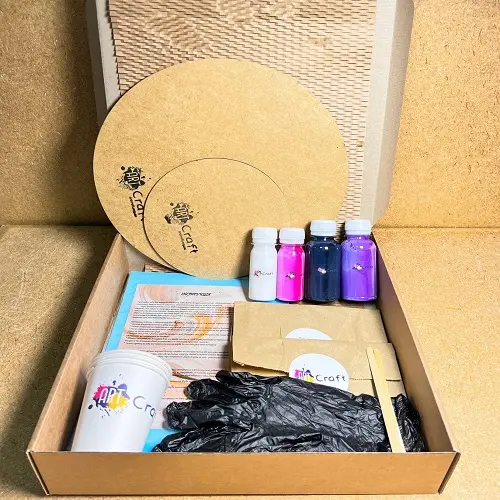 If you've decided to try creating your first painting in the fluid art technique, you don't need to immediately spend large sums on professional materials. Below is a basic kit that's suitable for beginner artists and will allow you to master the basic principles of working with liquid acrylic without significant financial investment:
If you've decided to try creating your first painting in the fluid art technique, you don't need to immediately spend large sums on professional materials. Below is a basic kit that's suitable for beginner artists and will allow you to master the basic principles of working with liquid acrylic without significant financial investment:
| Material | Purpose | Approximate Cost | Where to Purchase |
|---|---|---|---|
| Primed Canvas 30×40 cm | Base for the painting | $8-12 | Art stores, online marketplaces |
| Set of Acrylic Paints (5-6 colors) | Basic colors for creating the composition | $15-20 | Art stores, department stores |
| Acrylic Medium or PVA Glue | Thinner for achieving the right consistency | $7-10 | Art stores, hardware stores |
| Silicone Oil or Dish Soap | Creating cellular structure and effects | $3-5 | Supermarkets, household stores |
| Disposable Cups and Mixing Sticks | Preparation of paints of different colors | $3-5 | Supermarkets, household stores |
The cost of a complete kit to start creating in the fluid art technique is only $36-52, which is significantly cheaper than purchasing a ready-made interior painting of a similar size. This is an affordable way to create a unique piece of art with your own hands and gain new creative experience. Many art studios also offer workshops on creating paintings in various techniques, which is an excellent way to learn new skills under the guidance of professionals.
For those who prefer professional quality, there are studios offering canvas photo printing with delivery right to your home. Modern online painting designers allow you to preview the result and make necessary adjustments. The price of canvas printing varies depending on the size, complexity of processing, and selected materials, but on average starts from $20 for a small work.
An inspiring story from our clients:
"When my husband and I moved into a new apartment, the walls seemed so empty and lifeless. I found an old photograph of our first trip to Italy and decided to order it printed on canvas. When the painting arrived, I was amazed by the quality — the texture of the canvas gave the photograph a special depth and warmth. Now the living room doesn't just look complete, it tells our story. Every guest asks about the photo artwork, and it becomes an occasion to remember those wonderful days in Tuscany." — Julia, 34
Decorating Workspaces and Offices with Canvas Paintings
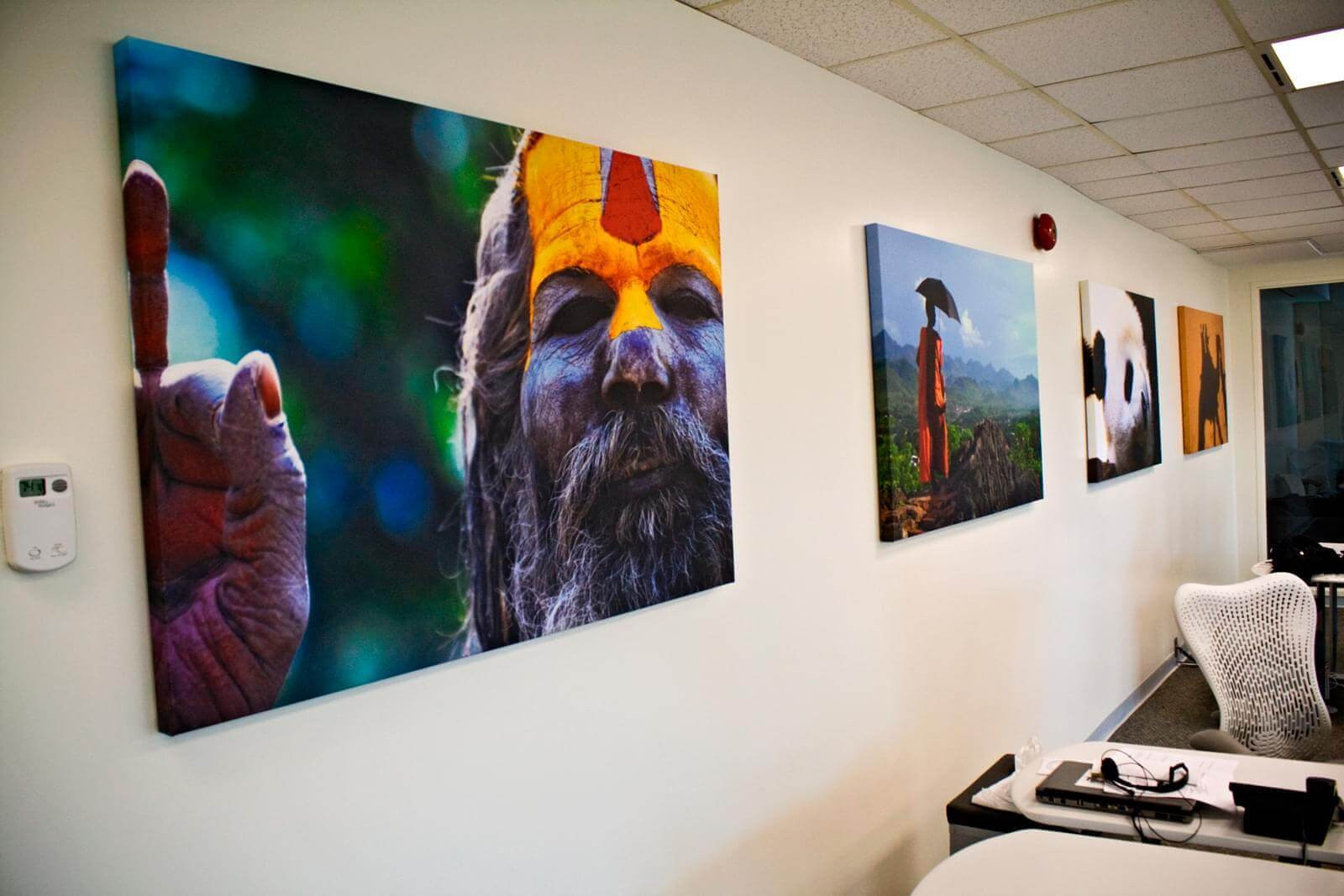 Decorating the interior of corporate spaces requires a special approach. Office decoration with paintings not only creates a pleasant atmosphere for employees but also forms a certain impression for clients and partners. When choosing wall images for a workspace, several factors should be considered:
Decorating the interior of corporate spaces requires a special approach. Office decoration with paintings not only creates a pleasant atmosphere for employees but also forms a certain impression for clients and partners. When choosing wall images for a workspace, several factors should be considered:
- Conformity with the corporate style and values of the company
- Psychological impact of the color scheme (blue and green shades promote concentration, orange and yellow stimulate creative thinking)
- The scale of images should correspond to the size of the room
- Content should be neutral or inspiring, but not distracting
Popular options for office spaces are abstract compositions, landscapes, city photographs, motivational posters, and branded images. Canvas reproductions of famous works of art can also emphasize the status and cultural values of the company. For open-space areas, large-format modular paintings are often used, which become visual dominants and help zone large spaces.
Innovative Technologies and Growth of the Interior Paintings Market
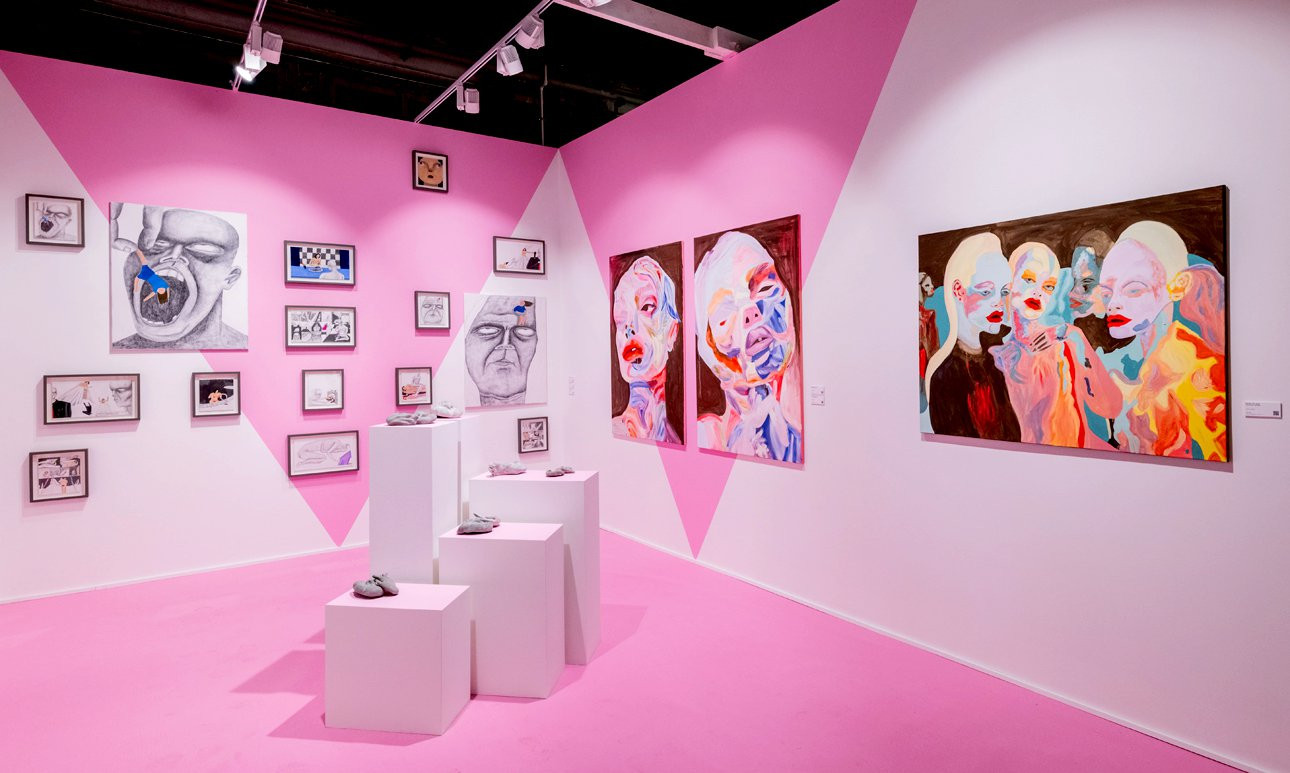 The global wall art market, including canvas paintings, was valued at $22.3 billion in 2024 and, according to forecasts, will reach $28.7 billion by 2027. Interior canvas paintings account for about 40% of this market, indicating the enduring popularity of this type of decor. Print products of this type consistently occupy leading positions in the interior design segment.
The global wall art market, including canvas paintings, was valued at $22.3 billion in 2024 and, according to forecasts, will reach $28.7 billion by 2027. Interior canvas paintings account for about 40% of this market, indicating the enduring popularity of this type of decor. Print products of this type consistently occupy leading positions in the interior design segment.
Comparison of Canvas Printing Technologies
| Technology | Features | Image Durability | Environmental Friendliness | Optimal For |
|---|---|---|---|---|
| Solvent Inks | Uses solvents, high resistance to external factors | Up to 5-7 years without protective coating | Low (harmful vapors) | Outdoor applications, industrial purposes |
| Eco-solvent Printing | Compromise between quality and environmental friendliness | Up to 3-5 years without protective coating | Medium | Economy-class interior paintings |
| UV Printing | Instant polymerization of paints under UV lamps | Up to 8-10 years without protective coating | High (no vapors) | High-quality interior solutions |
| Latex Inks | Water-soluble paints containing no solvents | Up to 3 years without protective coating | Very high (environmental safety certificates) | Eco-friendly interiors, children's rooms |
| Pigment Paints | High color reproduction and detail | Up to 75-100 years with varnishing and protection technologies | High | Photographs, reproductions, premium interior solutions |
Knowledge of various printing technologies and types of paints used will help you make an informed choice when ordering an interior canvas painting. For most home interiors, UV printing and pigment printing with protective coating provide the optimal balance of price, quality, and environmental friendliness, ensuring water resistance and durability of the image.
Technological innovations continue to transform the industry. One interesting innovation is the application of textured gel and textural pastes over digital prints to imitate oil painting brushstrokes. This technique is used by 15% of boutique art studios and allows achieving a stunning effect of an original painting even when transferring an image to canvas using a large-format printer.
Artificial intelligence in image processing also contributes to the evolution of creating interior paintings, allowing the generation of unique visual solutions based on text descriptions or modifying existing photographs in various artistic styles, from impressionism to hyperrealism. These technologies make color correction in editors more sophisticated and intuitive even for inexperienced users.
Conclusion: Art Accessible to Everyone
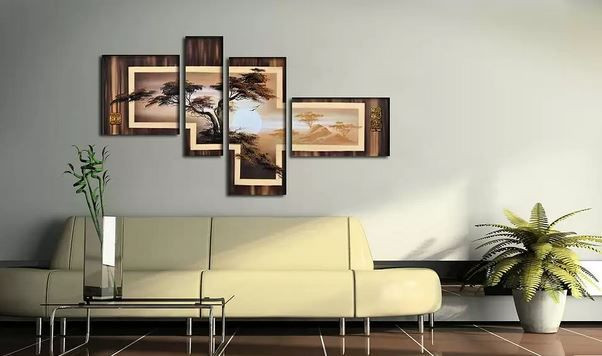 Creating interior canvas paintings is a unique combination of art and modern technology, making interior decoration with paintings accessible to everyone. Whether you choose to create paintings from photos from a professional studio, buy an interior painting from a ready-made collection, or prefer a creative DIY approach with your own canvas, the result will undoubtedly transform your space, filling it with individuality and character.
Creating interior canvas paintings is a unique combination of art and modern technology, making interior decoration with paintings accessible to everyone. Whether you choose to create paintings from photos from a professional studio, buy an interior painting from a ready-made collection, or prefer a creative DIY approach with your own canvas, the result will undoubtedly transform your space, filling it with individuality and character.
In the era of digital technologies and personalized design, custom interior paintings are becoming not just a way to decorate walls but a form of self-expression capable of telling your unique story through visual art. Don't be afraid to experiment with formats, artistic styles, and techniques — the modern wall image market offers limitless possibilities for implementing the boldest ideas!
Useful Resources for Further Study
- International Association of Large Format Printing Manufacturers (FESPA)
- Canvas Printing Academy — educational portal about printing technologies
- Interior Designers Association — recommendations on using paintings in design
- DIY Art Project Hub — community of DIY creativity enthusiasts
